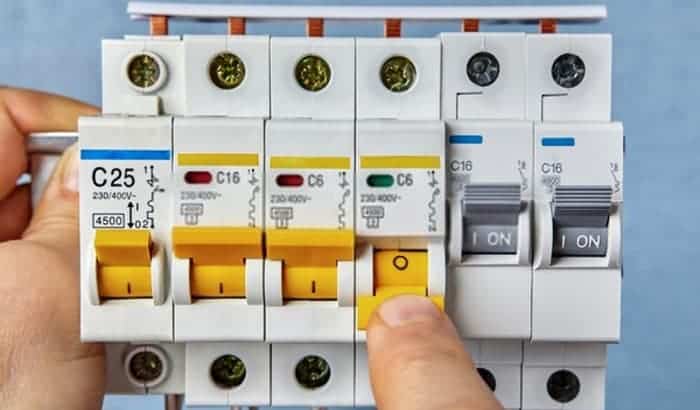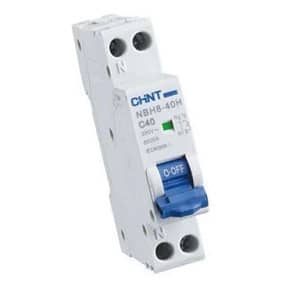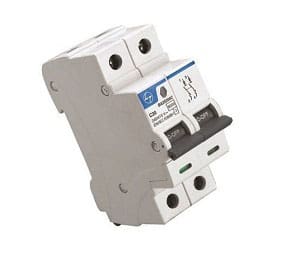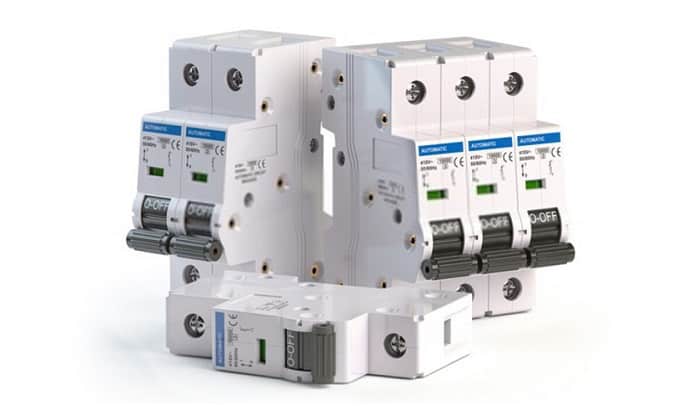
What is a circuit breaker? And what is the purpose of a circuit breaker in the electrical system?
A circuit breaker is a crucial part of an electrical system. It is designed to protect all electrical equipment connected to it by cutting off power in case of a short. Currently, there are three circuit breaker types available for residential use. Each of these has specific purposes, as you will see later in this article.
To understand more about each circuit breaker function, make sure to read until the end.
Table of Contents
The Purpose of a Circuit Breaker
By law, all electrical systems require a circuit breaker. Typically, you can find them all together installed in a breaker box. The function of circuit breakers depends on the type, although they have one primary purpose—to cut power (hence the name circuit breaker).
A breaker detects an anomaly in your electrical system—either abnormally high temperatures, a current imbalance, or a short circuit. If any of these were to happen, it will trip. This opens the circuit, thereby cutting off the flow of electricity.
Types of Circuit Breakers

There are three primary circuit breaker types. These are designed for use in residential and light commercial situations, with each type having a specific purpose.
Standard Circuit breakers
The standard circuit breaker works by cutting off power if the system reaches a temperature threshold. The current drawn in a circuit has a known temperature range. If it exceeds a specific temperature, that means the system is drawing much more current than it can handle.
Standard circuit breakers cut off power by using heat-sensitive materials. When the temperature limit is reached, it will cause the metal inside to bend, thus physically cutting off the flow of electricity. This safety feature helps ensure that your wire temperature won’t get too high, making it melt and causing a fire.
There are two types of standard circuit breakers: the single-pole and the double-pole. Explore the difference between the two below.
- Single-Pole Circuit Breakers

A single-pole circuit breaker protects 1 wire. It also has a power supply of 120 volts and is usually rated between 15-20 amps. It is mainly used for non-heating and low amperage household use.
- Double-Pole Circuit Breakers
A double-pole circuit breaker has 2 single-pole breakers and protects 2 wires. It can handle a power source of up to 240 volts and is often rated for 20 to 60 amps. It’s primarily used for household circuits requiring higher voltage or amperes—like HVAC units and electric ranges.

The main downside of standard circuit breakers is their way of detecting anomalies. They require heat to trigger, so they need an ongoing fault to activate. If the fault hasn’t reached the required temperature to trip the breaker, it will not react as quickly.
The primary purpose of the standard circuit breaker is to protect property. It protects against circuit overloads and prevents electrical damage to your equipment, appliances, and even your whole house.
Recommended comparison: Double pole vs single pole breaker: Which is the better?
2. GFCI Circuit Breakers

Unlike a standard circuit breaker that detects heat in an electrical system, the GFCI circuit breaker senses an imbalance in current flow. It is immediately tripped when it detects such irregularity, like a grounded wire before someone gets electrocuted.
This GFCI circuit breaker is usually installed in outlets near water sources. This is because these can be easily grounded by moisture and cause electric shock. It can detect even small currents of four or five milliamps and respond in as quickly as a tenth of a second.
The GFCI circuit breaker prevents electrical shocks that mainly occur in wet areas like the kitchen and bathroom. It can also be installed in other places, like the garage, laundry, and outdoors, to protect against grounding.
3. AFCI Circuit Breakers
AFCI or arc-fault circuit interrupter is also known as AFDD or arc-fault detection device. It means that it detects the electrical arcs caused by damaged wires. It can also identify arcs from extension cords or within electrical appliances, as long as they’re connected to the circuit.
An arc fault happens when an electrical cable’s insulation gets damaged. This can occur when nails pierce your wiring conduit, through rodent bites, or simply due to age. The AFCI circuit breaker is mainly required to be installed in commercial establishments like dormitories and rentals.
In addition to the protection provided by the standard circuit breaker, the AFCI circuit breaker further reduces the potential risks in your electrical circuit. It can also prevent the ignition of a faulty arc, protecting you and your property from fire.
To help you identify your circuit breaker, you can watch this video by Circuit Breaker Wholesale.
Read this post to easily compare AFCI vs GFCI.
Conclusion
After reading this article, you now know what a breaker is and the types you can find. Once you know what is the purpose of a circuit breaker, you now have an idea of how you could better protect your property, appliances, and the people in your home.
So, did you enjoy reading this article? Do you now have an idea of the correct circuit breaker you need for your home? Share your thoughts in the comments below.

I am Edwin Jones, in charge of designing content for Galvinpower. I aspire to use my experiences in marketing to create reliable and necessary information to help our readers. It has been fun to work with Andrew and apply his incredible knowledge to our content.
